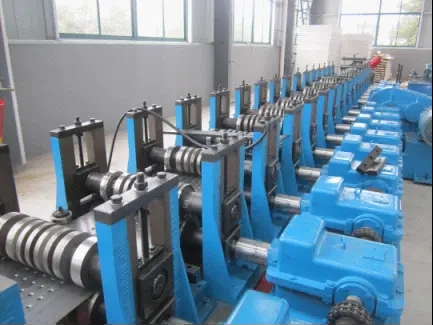The Advancements in Drywall Forming Machines
In the construction industry, drywall has emerged as a flexible and efficient material for creating interior walls and ceilings. With the growing demand for drywall products, there has been an increasing interest in the machinery used for drywall production, particularly drywall forming machines. These machines are fundamental in the manufacturing process, offering both speed and precision to meet the needs of a rapidly evolving market.
What is a Drywall Forming Machine?
A drywall forming machine is a specialized piece of equipment designed to produce gypsum boards, commonly referred to as drywall. The process begins with raw gypsum, which is mixed with water and various additives to create a slurry. This slurry is then poured between two sheets of paper, where it undergoes a series of processes that include forming, drying, and cutting to create finished drywall sheets.
The Key Components and Working Principle
At the heart of the drywall forming machine is its ability to automate the entire production process. Key components include mixing tanks, forming tables, drying ovens, and cutting stations. The machinery operates in a continuous flow, with each component seamlessly integrated to increase efficiency.
1. Mixing The process starts with the precise measurement and mixing of gypsum, water, and additives. This is crucial as it determines the quality of the final product. Advanced machines utilize computer-controlled systems for accurate measurements.
2. Forming Once the slurry is prepared, it is poured onto a conveyor system that carries it to a forming table. Here, it is spread evenly to form sheets of desired thickness. This stage requires meticulous control over factors such as thickness and density, which can significantly impact the performance of finished drywall.
drywall forming machine
3. Drying After forming, the wet sheets are sent through drying ovens where they are subjected to controlled heat and humidity levels. This step is essential for removing moisture content, leading to a sturdy final product.
4. Cutting and Finishing The dried drywall sheets are then cut to standard sizes. Advanced drywall forming machines include automated cutting systems that ensure uniformity and precision.
Benefits of Modern Drywall Forming Machines
The use of modern drywall forming machines has revolutionized drywall production. One of the most significant advantages is increased efficiency. Automated processes reduce labor costs and minimize human error, resulting in higher quality products. Additionally, these machines are designed to maximize output, allowing manufacturers to meet large-scale demands.
Moreover, advancements in technology have also led to environmentally friendly solutions. Many manufacturers are now able to recycle waste materials during the production process, thus reducing the environmental footprint associated with drywall manufacturing.
Conclusion
In summary, drywall forming machines are essential to the modern construction industry, playing a critical role in producing the high-quality drywall that is essential for contemporary building projects. As technology continues to evolve, these machines are becoming more efficient, sustainable, and reliable. Manufacturers who invest in advanced drywall forming technology are likely to gain a competitive edge in a market that increasingly values quality and efficiency. With the ongoing growth in the construction sector, the drywall forming machine will remain a pivotal tool in meeting the future demands for building materials.







